Ever wondered about the differences between capybaras and beavers? You’re not alone. These two semi-aquatic rodents often get mixed up, but they’re as different as apples and oranges. Let’s dive into the fascinating world of these water-loving creatures and uncover what makes each unique.
The Basics: Size, Shape, and Appearance
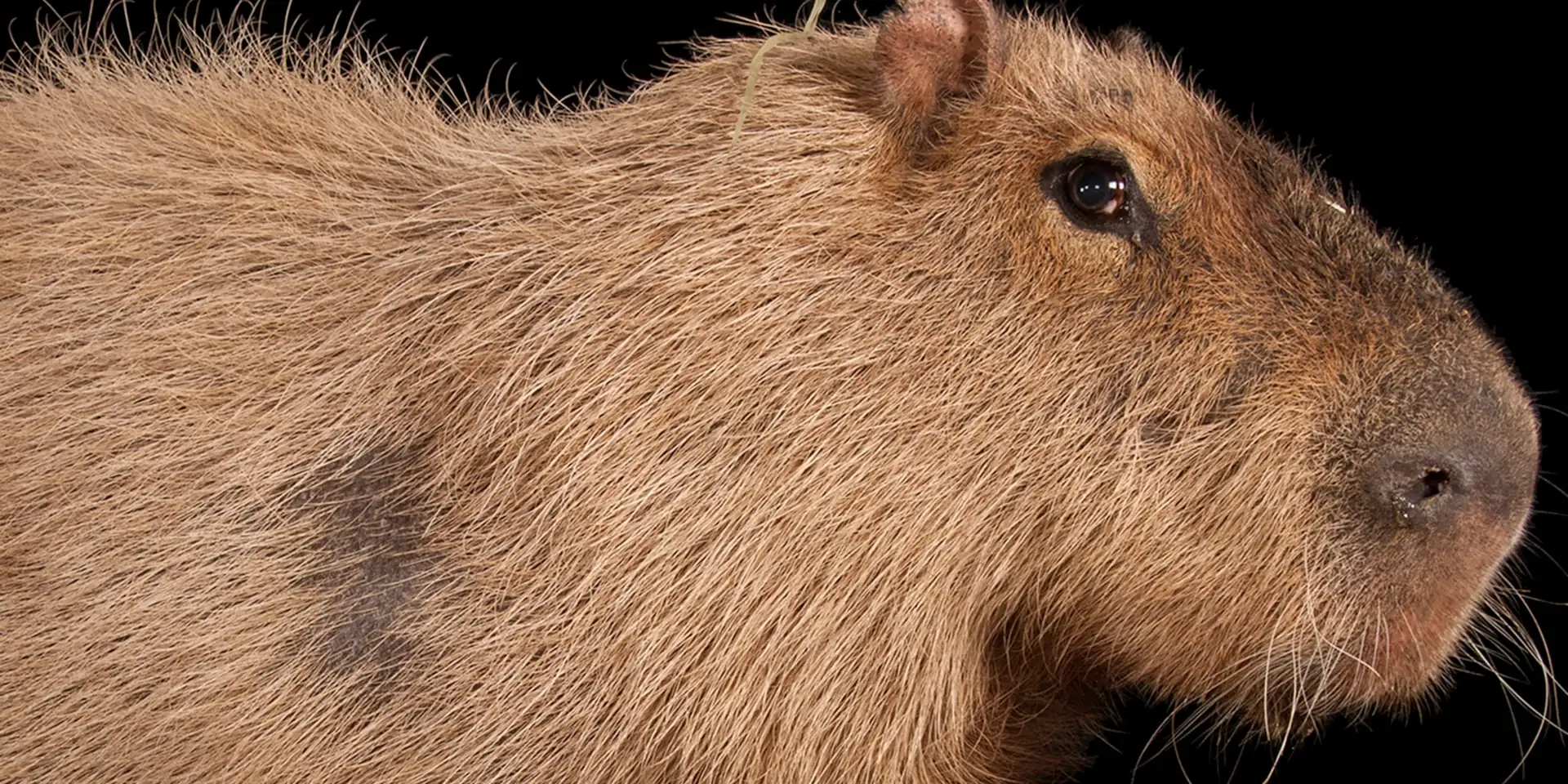
Let’s start with the obvious – size matters. Capybaras are the heavyweight champions of the rodent world, tipping the scales as the largest living rodents. These South American giants can grow up to 4.5 feet long. Beavers, while no slouches themselves, are a bit more modest in size, typically reaching lengths of 3 to 4 feet.
But it’s not just about length. Capybaras rock a stocky, pig-like body that’s built for lounging in the sun and taking leisurely swims. Beavers, on the other hand, sport a more streamlined shape, perfect for their dam-building shenanigans.
Here’s a quick rundown of their physical features:
- Capybara:
- Pig-like body
- Short head
- Heavy muzzle
- Reddish to dark brown fur
- Beaver:
- Streamlined body
- Flat, scaly tail
- Webbed hind feet
- Dense, water-resistant fur
Habitat and Distribution: Where in the World?
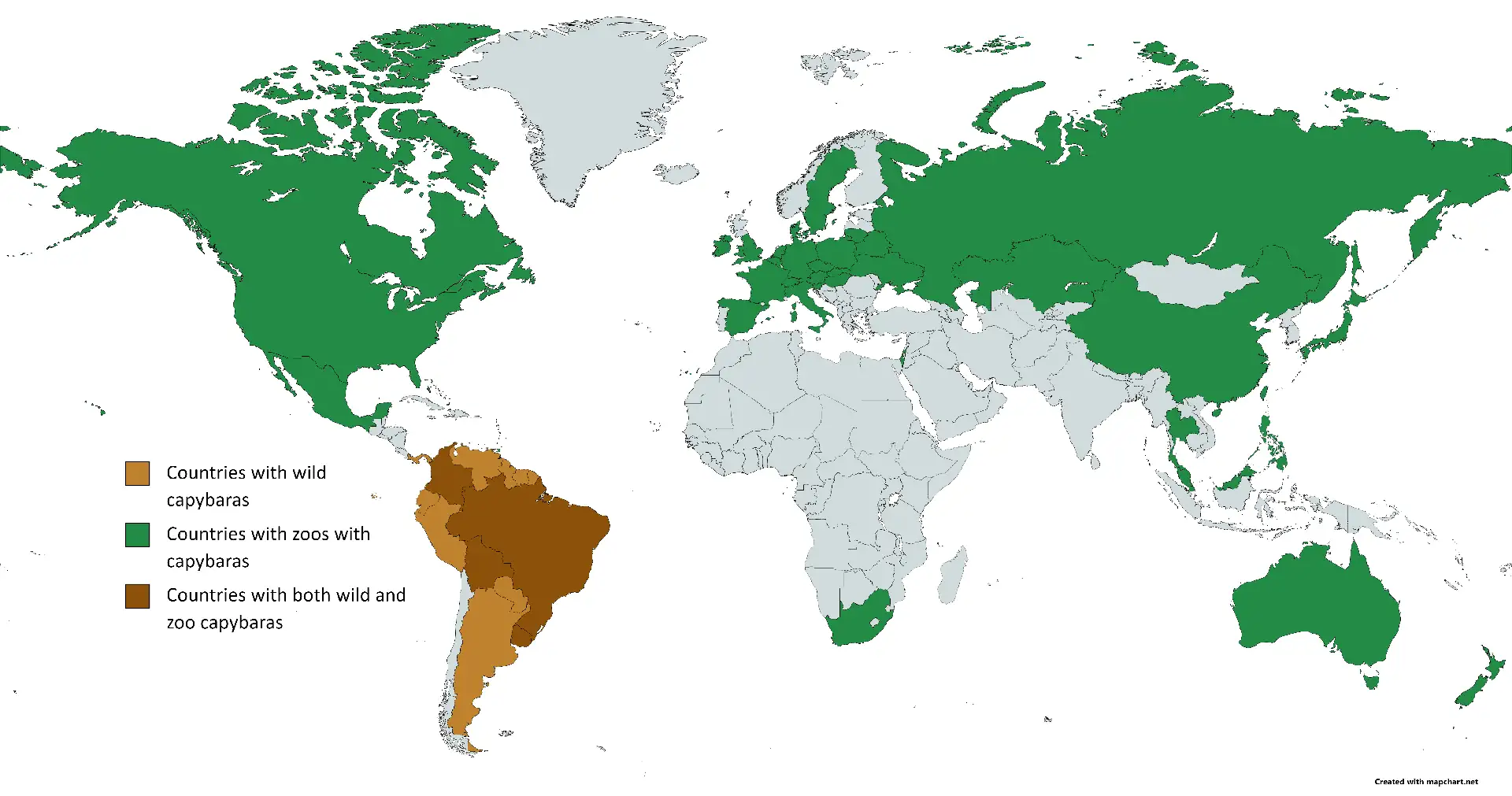
Now, let’s talk real estate. Where can you find these water-loving rodents?
Capybaras are the party animals of South America. They’re living it up in countries like Brazil, Venezuela, and Colombia. These social butterflies love hanging out in wetlands, marshes, and forests near water bodies. They’re all about that tropical and subtropical life.
Beavers, however, are more of the northern hemisphere type. You’ll find North American beavers chilling in Canada and the US, while their Eurasian cousins are spread across Europe and Asia. They’re not picky – rivers, streams, lakes, ponds – if it’s got water, they’re there.
Behavior and Social Life: Party Animals or Lone Wolves?
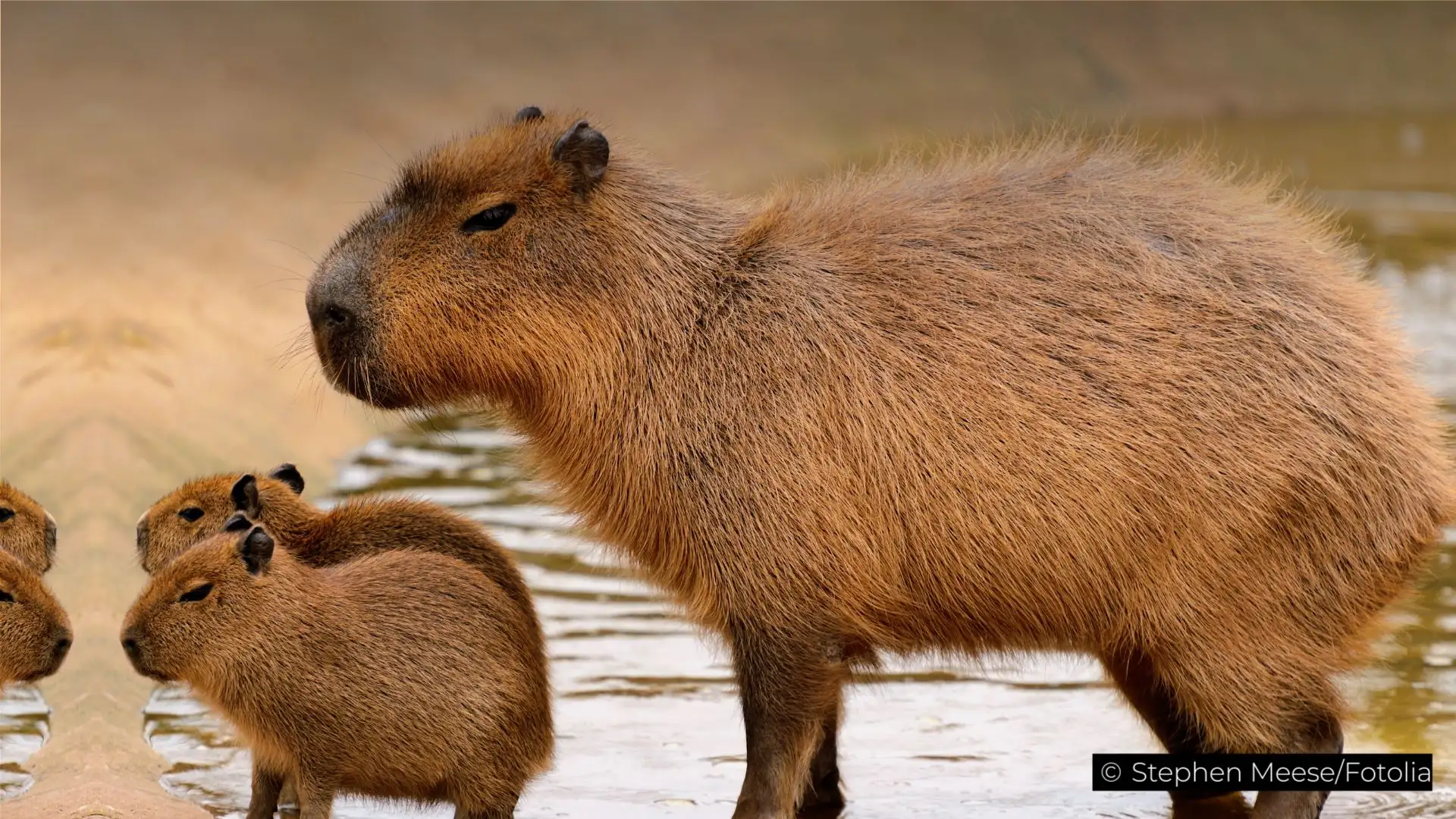
When it comes to social life, capybaras and beavers couldn’t be more different.
Capybaras are the ultimate social butterflies. They live in large groups called herds, sometimes up to 100 individuals strong. It’s like they’re running their own social media platform – CapyBook, if you will. They’re all about grooming each other, chatting (yes, they vocalize!), and even babysitting each other’s kids.
Beavers, on the other hand, are more about that family life. They live in smaller family units, typically consisting of a monogamous pair and their offspring. They’re the hardworking suburban family of the animal world, focusing on building and maintaining their home together.
Diet and Feeding Habits: What’s on the Menu?
Both capybaras and beavers are strict vegetarians, but their menus differ quite a bit.
Capybaras are like that friend who’s always on a health kick. Their diet consists mainly of grasses and aquatic plants. They’re also known to munch on bark, fruits, and even some crops (much to farmers’ dismay).
Beavers, however, are more like lumberjacks. Their diet includes bark, twigs, leaves, and aquatic plants. But here’s the kicker – they also fell trees for food and construction material. Talk about a two-for-one deal!
Environmental Impact: Nature’s Engineers
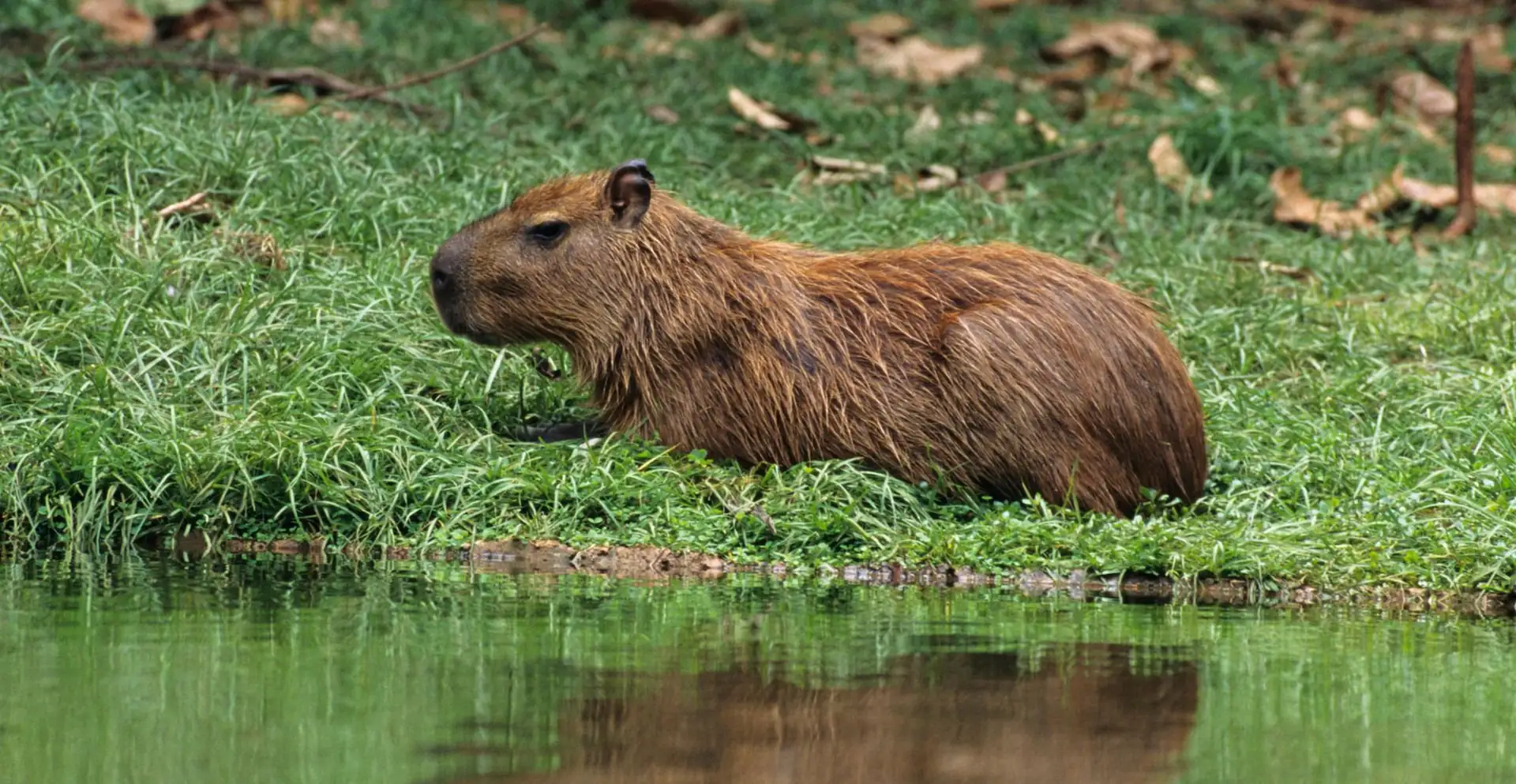
Now, this is where things get really interesting. Both capybaras and beavers play crucial roles in their ecosystems, but in very different ways.
Capybaras are like nature’s lawnmowers. They graze on aquatic vegetation, helping to maintain the balance in their wetland habitats. They also serve as a vital food source for predators like jaguars and anacondas.
Beavers, however, are the true engineers of the animal world. Their dam-building activities create wetlands, which:
- Provide habitat for other species
- Improve water quality
- Help control flooding
- Recharge groundwater supplies
It’s like they’re running their own eco-friendly construction company!
Swimming Abilities: Who’s the Michael Phelps of Rodents?

Both capybaras and beavers are excellent swimmers, but they have different styles.
Capybaras are like the laid-back surfers of the rodent world. They have partially webbed feet and can hold their breath for up to five minutes. They often hang out in water to cool off and escape predators.
Beavers, though, are the Olympic swimmers of the bunch. With their webbed hind feet and flat, paddle-like tails, they’re built for speed and agility in the water. They can even use their tails as rudders for steering!
FAQs: Your Burning Questions Answered
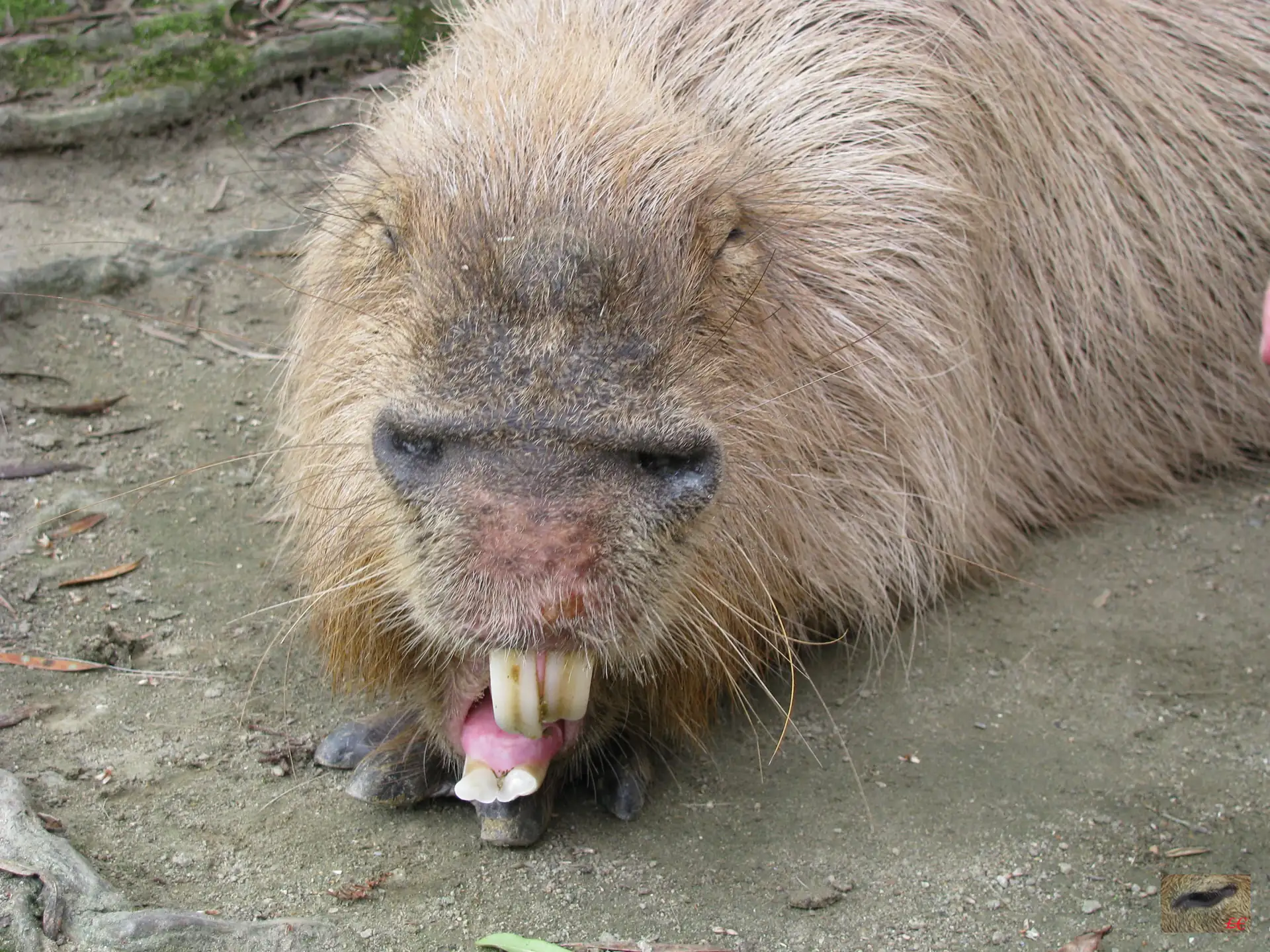
Q: Are capybaras and beavers related?
A: While both are rodents, capybaras and beavers belong to different families. Capybaras are part of the Caviidae family, while beavers belong to the Castoridae family.
Q: Which is bigger, a capybara or a beaver?
A: Capybaras take the crown here. They’re the largest living rodents, typically larger than beavers.
Q: Can capybaras and beavers be kept as pets?
A: While some people do keep capybaras as exotic pets (where legal), it’s not recommended for either species. They have complex needs and are best left in their natural habitats.
Q: Do capybaras build dams like beavers?
A: No, dam building is a beaver’s specialty. Capybaras don’t construct elaborate structures like beavers do.
Q: Which animal is more social, capybaras or beavers?
A: Capybaras are more social, living in large herds. Beavers are more family-oriented, living in smaller family units.
The Bottom Line: Celebrating Diversity
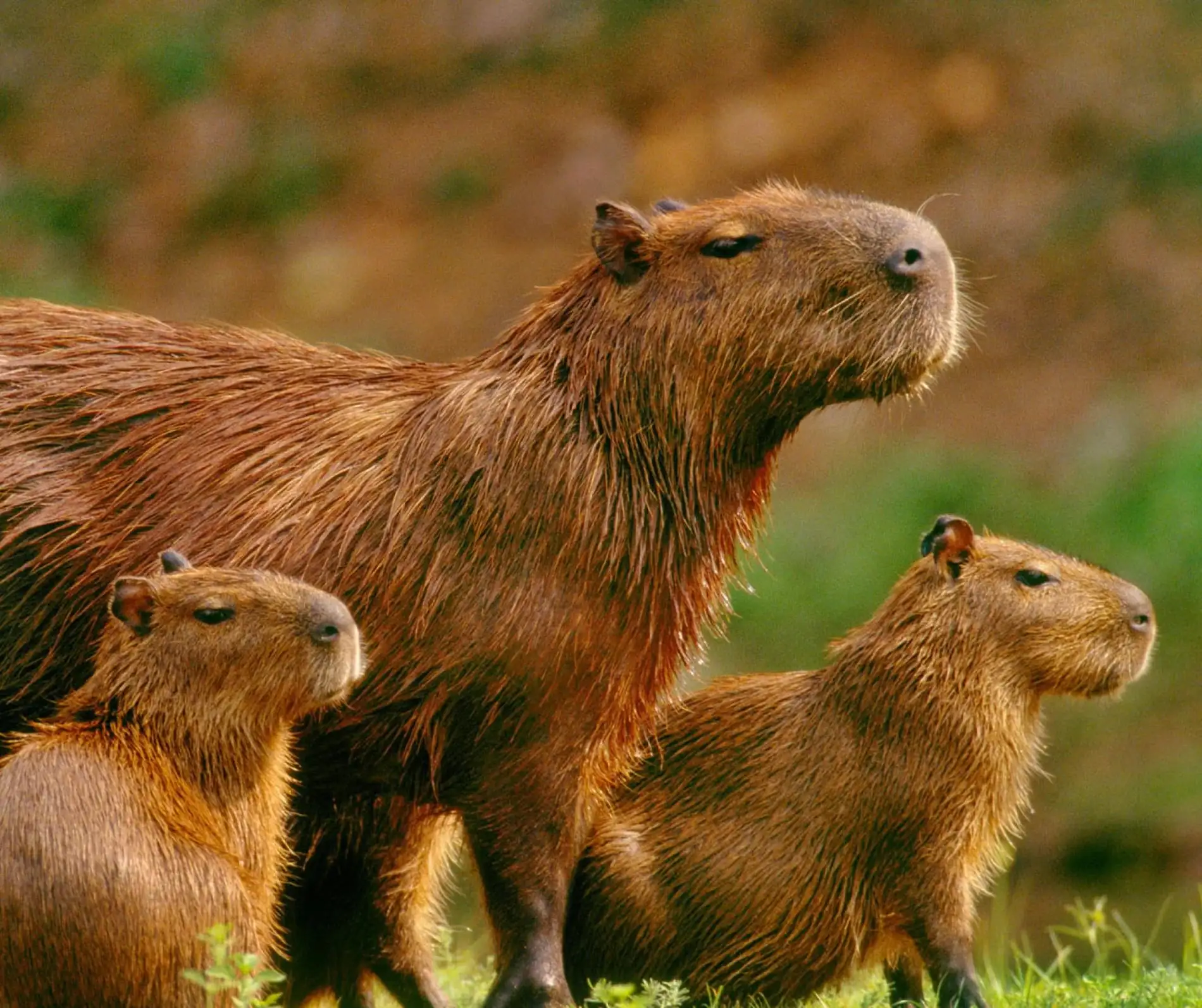
So, there you have it – capybaras and beavers, two amazing rodents that have adapted to semi-aquatic life in their own unique ways. From the social, tropical-loving capybaras to the industrious, family-oriented beavers, these animals show us the incredible diversity of nature.
Next time you’re near a wetland or river, keep an eye out for these fascinating creatures. Whether you spot a capybara lounging with its herd or a beaver busy at work on its dam, you’ll now have a deeper appreciation for these remarkable animals.
Remember, in the grand scheme of things, it’s not about capybara vs beaver. It’s about appreciating the unique roles each plays in their ecosystems. So let’s raise a glass (of water, of course) to these awesome aquatic engineers!
